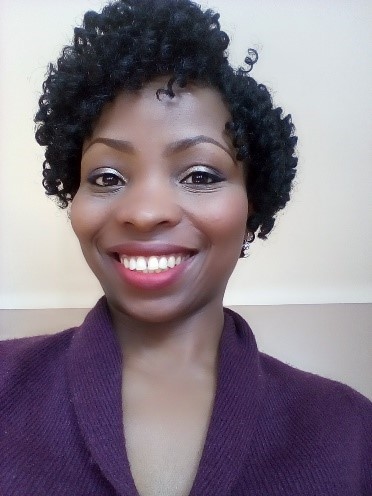Les co-auteurs de ce blog invité sont le Professeur Rob Hope (REACH Programme) et le Dr Guy Hutton (UNICEF). Une version de ce blog an anglais est disponible sur le site web du programme REACH.
Rendre l’eau potable abordable pour les populations rurales a toujours été un défi. La COVID-19 exerce des pressions urgentes sur les gouvernements, les prestataires de services et les utilisateurs d’eau en milieu rural qui ont des besoins prioritaires en eau pour se laver les mains à la maison, dans les écoles et dans les établissements de santé.
Le 23 juin, le programme REACH et l’UNICEF ont organisé un webinaire en partenariat avec le RWSN afin de présenter de nouvelles données sur l’évolution de la demande et des revenus de l’eau, et d’étudier comment mesurer l’accessibilité économique de l’eau dans le but d’améliorer les réponses politiques et programmatiques. Le webinaire complet est accessible ici.

Nous avons identifié cinq leçons clés que nous présentons ci-dessous, en réponse à la question: Les populations rurales peuvent-elles payer pour l’eau en temps de crise ?
Leçon 1 – Cela est possible. L’expérience de la République centrafricaine (RCA) a mis en évidence un modèle de prestation de services professionnels qui a permis de fournir des services d’eau fiables pendant de nombreuses années à échelle, malgré la guerre civile et la stagnation économique. Des pays comme l’Inde sont en train d’étendre une plateforme de suivi pour améliorer les réponses, soutenue par des prestataires de services gouvernementaux établis sur place.
Leçon 2 – C’est plus difficile en temps de crise. Les pays sans données et sans réseau de prestataires de services responsabilisés sont confrontés à des choix plus difficiles. L’approvisionnement en eau, imposé par la loi, les politiques et la réglementation, est limité en l’absence de prestataires de services déjà établis au niveau local. Les prestataires informels, tels que les vendeurs, peuvent desservir des populations éloignées en temps normal, mais leur capacité à fournir de l’eau pendant la pandémie de la COVID-19 est limitée en raison des restrictions de voyage. Les règles doivent rester souples.
Leçon 3 – Les populations pauvres sont les plus vulnérables. Les données mondiales ont illustré les coûts plus élevés que payent les groupes aux revenus les plus faibles au Ghana, au Cambodge, au Pakistan et en Zambie, ainsi que les coûts importants liés au temps passé à transporter de l’eau, qui sont plus élevés pour les déciles aux revenus les plus faibles. La conception de tarifs mensuels plutôt que volumétriques peut éviter une contrainte de revenu liée à l’augmentation de l’eau pour les besoins d’hygiène. Les inondations et les sécheresses présentent un risque supplémentaire important. Le suivi des données est ainsi un outil clé permettant de fournir une alerte précoce pour cibler les ressources afin de limiter les dommages.
Leçon 4 – Assurer un financement durable. Une eau fiable peut coûter moins d’un dollar par personne et par an. Mais cela nécessite une subvention pour les prestataires de services locaux et les utilisateurs d’eau ont besoin d’un soutien pour maintenir les services en fonctionnement. Une large proportion des populations rurales ne paie pas l’eau aujourd’hui par choix ou en raison d’inégalités. Il a été noté que les gouvernements ne peuvent pas se permettre de ne pas assurer l’accès à l’eau pour les populations. Mais une “eau gratuite” causerait plus de tort, mettant en péril la capacité des prestataires à fournir et à maintenir des services pour tous. Il s’agit là de choix difficiles et les décisions dépendront du contexte.
Leçon 5 – Mieux reconstruire. La COVID-19 a mis en évidence les faiblesses connues de l’ approvisionnement en eau en milieu rural. Investir dans des prestataires de services locaux et responsabilisés est un élément clé de toute stratégie de durabilité. Les écoles et les établissements de santé sont au cœur de ce vaste réseau de services et constituent une priorité essentielle. Ces institutions partagent souvent des infrastructures hydrauliques avec les communautés rurales, et pourraient constituer un élément central et stratégique de l’approvisionnement en eau pour tous.

Le webinaire s’est déroulé en deux parties sur une durée d’une heure et demie. Tout d’abord, un aperçu du débat et des caractéristiques de l’accessibilité financière par le professeur Rob Hope (Université d’Oxford), présenté par Alice Chautard avant les présentations du Dr Guy Hutton (UNICEF), Andrew Armstrong (Université d’Oxford)et le Dr Sonia Hoque (Université d’Oxford). Cette présentation a été suivie par une session de questions-réponses facilitée par Alice Chautard. Le webinaire complet est accessible ici.
Si vous avez des questions ou des commentaires, n’hésitez pas à nous écrire : reach@water.ox.ac.uk et vous pouvez nous trouver sur Twitter @REACHWater @UNICEFWater @RuralWaterNet. Crédits photo: Mary Musenya Sammy et Cliff Nyaga.






